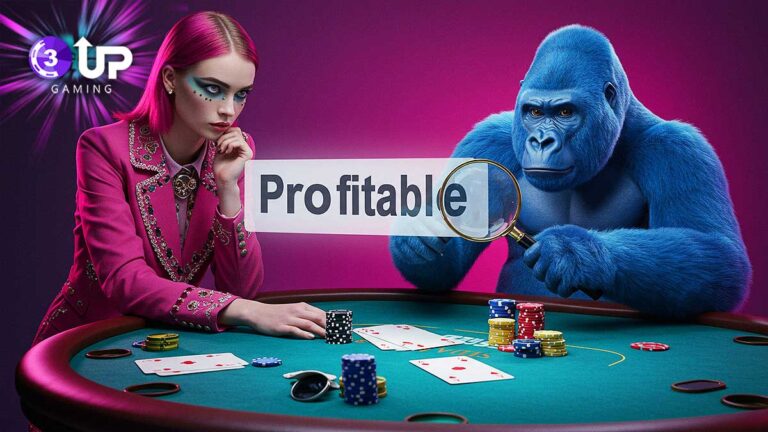How to Buy a Profitable Poker Site? Complete Guide! This guide covers everything you need to know, from market research and law to growth strategies and traps. Whether you’re an investor seeking high yields or a poker player looking to play big, you’ll receive practical, useful advice here.
How to Buy a Profitable Poker Site? Complete Guide!
Looking to invest in a poker website and turn a steady profit? Buying a profitable poker site can be a lucrative move,if done right. In this complete guide, we’ll walk you through how to evaluate existing poker platforms, analyze traffic and revenue, ensure legal compliance, and assess key features like user experience, security, and payment integration.
Whether you’re a seasoned investor or new to the online gaming world, understanding how to buy a profitable poker site is essential for long-term success. Read on to discover insider tips, red flags to avoid, and expert strategies to make a smart purchase in today’s competitive iGaming market.
Understanding the Online Poker Market
The online poker market has grown immensely in the last couple of years, and it’s still growing as more players transition to online tables. Technology is still improving, and new poker sites are still popping up, so the competition gets tougher.
If you’re thinking of buying a profitable poker site today, you really need to understand the current trends to make the best investment. Several global trends are shaping the market. For instance, mobile poker is huge now- players can join games whenever and wherever they want.
This has led to an increase in casual players, which has helped poker reach a bigger audience. Also, more sites are adding live-streaming and social features, which have led to greater player interaction and increased profitability. Before you buy a profitable poker site, understanding these trends will help you see how they affect both player behavior and revenue.
It’s also very useful to have a notion of who your audience is. Different poker sites appeal to different types of players, whether they’re playing solely for entertainment or looking for high-stakes games.
Having a notion of who visits your site enables you to make more intelligent decisions about what games to offer, how to promote, and what promotions to run. This way, you can keep your site appealing and competitive in a busy market.
What Makes a Poker Site Profitable?
If you are to buy a successful poker site, there are a number of things you should consider. First and foremost, the rake structure is rather important. It is simply the fee the site earns for every hand. A good system will make the site profitable without driving players away.And then there’s player retention.
Players will remain longer if they are rewarded or given bonuses. And then, of course, there’s traffic. The greater the number of players, the more activity and revenue.
Before you go ahead with buying a profitable poker site, you should get how all of these things work together. That way, you can make a smarter choice.
Turnkey vs. Custom Poker Sites: Which one Should You Choose?

So, you’re thinking about jumping into the poker business. Now, the big question: Do you go with a ready-to-go poker site (turnkey)or do you want to create your own from scratch? Honestly, it depends on what you’re looking for.
If you’re the type who wants to dive in fast and doesn’t want to deal with a million details, a turnkey site is probably the move. Everything’s already set up for you- the games, the payment system, and all the back-end stuff. You could be up and running in no time, and it’s super simple if you’re not techy or just want to start making money without the wait.
but , if you’ve got a clear vision of exactly what you want, then custom sites could be more your speed. You get to make all the decisions and really shape it into something that’s you. But- here’s the thing- it takes longer, costs more, and there’s definitely some tech work involved.
So here’s the deal:
- Want something quick and easy? Turnkey is the way to go.
- Want to make it your own and have full control? Custom’s your best bet. It’s all about what you’re comfortable with and what fits your goals!
Where to Find Profitable Poker Sites for Sale?
So, would you like to buy a profitable poker site? There are some sites where you can look for excellent options. Websites like Flippa and Empire Flippers are a good place to begin. These sites usually list poker businesses for sale and give you all the details- stuff like traffic, earnings, and how well it’s doing.
If you want something a bit more personal, you could hit up a business broker who knows the poker world. They can help you find sites and walk you through the whole process.
Also, don’t sleep on poker forums or social media groups. There are lots of poker lovers and owners who chat there, and sometimes you’ll find a profitable site for sale or someone looking for a partner. Just make sure to do your research and be careful with who you trust.
It takes a bit of effort, but these places are great to kick off your search for a profitable poker site.
Key Metrics to Evaluate Before Buying
Before buying a poker site, look beyond the asking price. Think about the most valuable individuals for the company.
Player traffic matters-consistent daily and monthly active players mean steady cash flow.
Monthly revenues are a factor as well. Look where money is coming in (like rake fees or deposits) and if it is recurring.
Customer acquisition cost (CPA) is the expense of getting new players. It can be high if there is bad marketing or if there is a loss of players.
Player retention is also very important. Returning players that come back are what end up making a site profitable in the long run.
Watch out for hidden costs like server fees or maintenance fees that do not show themse;ves initially.These figures will tell you whether or not the site is a good investment.
Conducting Due Diligence Before the Purchase
Before you jump into buying a poker site, take a step back and do your homework. Start by checking the numbers-how much the site earns, spends, and keeps as profit. Look at patterns over the past 6-12 months. If the income`s all over the place, that’s a red flag.
Then, take a look under the hood. Is the site based on solid, up-to-date technology? It should be running smoothly, secure, and poised to grow. You don’t want to be patching bugs or fixing outages shortly after buying.
Also, check out the players. Are they sticking around and playing regularly, or do they just show up once and disappear? You can get a rough idea by seeing how many return trips the site gets and what people are saying in comments. If they just keep coming back repeatedly, that’s usually a good sign that the site’s doing something right- and it’s got good potential to keep producing revenue.
Negotiating the Deal and Finalizing the Transfer

Once you’ve found a poker site you’re genuinely interested in, it’s time to have a real talk with the seller. Be upfront and ask whatever you need- how much the site earns, how many players visit, how solid the tech is, and whether there’s potential to grow. If something doesn’t make sense, don’t hesitate to ask again. After all, it’s your money on the line.
Feeling good about it? Great- now it’s time to negotiate. Try to agree on a fair price based on how well the site’s doing. Chat about how and when the payment will be made, and see if the seller is willing to stick around for a short while to help you settle in. Not sure what a fair price looks like? You can always bring in a third-party expert to help out. And to keep things safe for both sides, consider using an escrow service.
Make sure everything’s in writing. A clear contract should lay out what you’re buying, any support offered after the sale, and how the handover will happen. On the technical side, collect all the logins, domains, and backend access you’ll need. If tech isn’t your strong suit, get help from someone who understands the systems.
Once all of it’s signed and transferred over, congratulations- you now own a poker site now the game’s afoot.
How to Grow Your Poker Site After Purchase?
So you’ve finally bought a poker site- well done! But the thing is, buying it is the first half of the job. If you’re serious about building it up to something bigger and better, here are some simple things you can do.
Start with the basics. Is the site operating well? Are players getting a good experience? Make sure that everything is loading quickly, mobile friendly, and free of infuriating bugs. A clean and simple site gets people to want to stick around-and play longer.
Next, consider how to spread the word. Experiment with posting poker advice on social media, blogging, or even having a few small promotions. The more views your site gets, the better. Don’t forget to make your site easily found on Google- simple SEO can go a long way.
Keeping players happy is another key one. Consider adding some cool features like leaderboards, rewards, or small daily treats. People like coming back when they feel valued or can win a small reward.
And naturally, pay attention to what’s working. Track traffic and player engagement using simple tools. If something’s not working, tweak it in small ways. A little extra care here and there can bring steady, long-term growth.
Read More: Standalone Poker: The All-In-One Solution for Your Platform!
Common Mistakes to Avoid When Buying a Poker Business
Buying a poker company is exciting- but risky if you’re not careful. Let’s talk about some blunders individuals make (so you won’t).
One huge mistake is skipping proper research. Just because a poker site looks glossy doesn’t imply that it’s solid or lucrative. You need to get into the numbers and client data before making the jump.
Another issue? Skipping around legalities. Some buyers fail to double-check licenses or simply assume it’s all good. Don’t do that- make sure the site is completely legal and compliant, especially if you’re buying an international site.
Also, don’t rush into anything. Sellers might try to get you to act quickly, but slow down. Ask questions, review the code, examine traffic patterns- buying a poker business isn’t something you want to do on the spur of the moment.
And last, don’t underestimate marketing. Just because the site is live doesn’t mean people will come. Figure out how you’re going to get traffic before you spend your money.
Avoid these blunders, and you’ll be a heck of a lot more likely to get a really profitable poker site.
FAQ: How to Buy a Profitable Poker Site?
Can I make a return on investment quickly?
For sure! But it just depends upon the poker site you’re buying and how you operate it thereafter. If the site’s already profitable and you have some concept of what you’re doing, you may well begin to realize returns fairly quickly-within a year or so. But developing the business, retaining players, and improving the site will be key factors in how quickly you realize a return.
Do I need gaming experience to run a poker site?
Nope! You won’t have to be a poker pro to run a site. All you really need are solid business sense like marketing, customer service, and smooth-running operations management. And even if you’re not very familiar with the game itself, no worries- get people who are well-versed with the game in as employees and you’re good to go!
Is it better to buy an existing site or build from scratch?
It’s based on your goals. Buying an existing website is that you begin with an existing player base and traffic established. It’s faster if you want quicker returns. But if you’re an individual who likes the idea of creating something from scratch and completely being in control of everything, then creating it from scratch could be your way. Both have their pros and cons!
What are the risks involved in buying a poker site?
As with any company, there are risks involved, legal issues, technical hiccups, or financial ones can arise if you’re not careful. That’s why doing your due diligence thoroughly before you buy is something that you must do. If you dig deep into the legal, technology, and financial sides, you’ll be able to minimize the risks and be a smarter investor.


